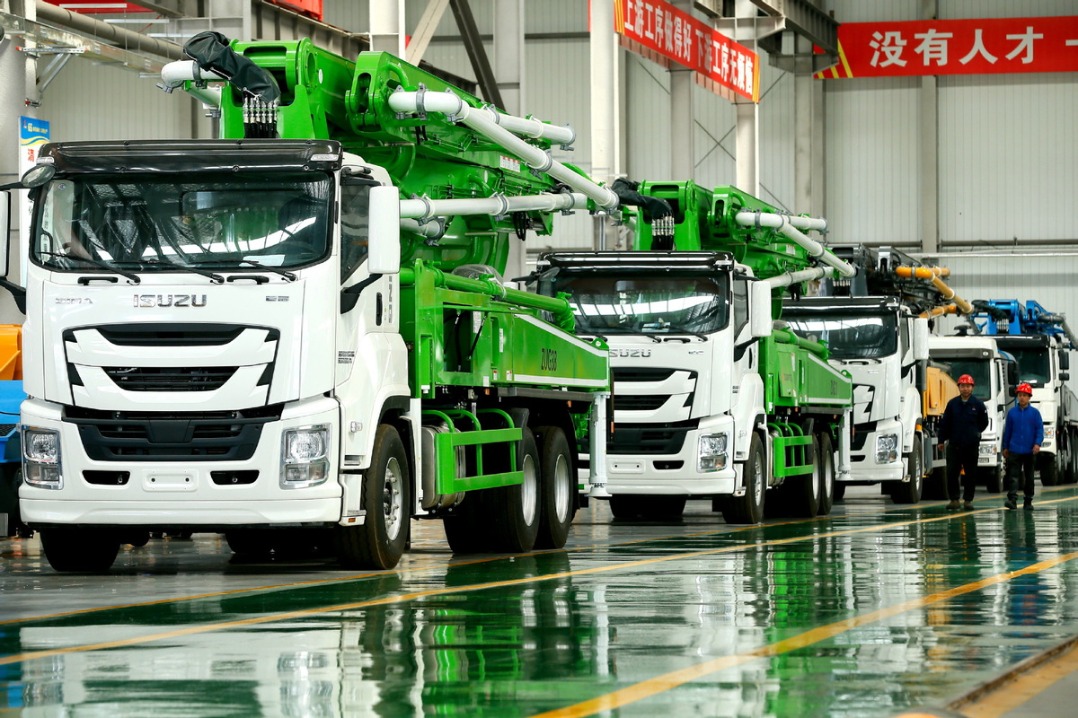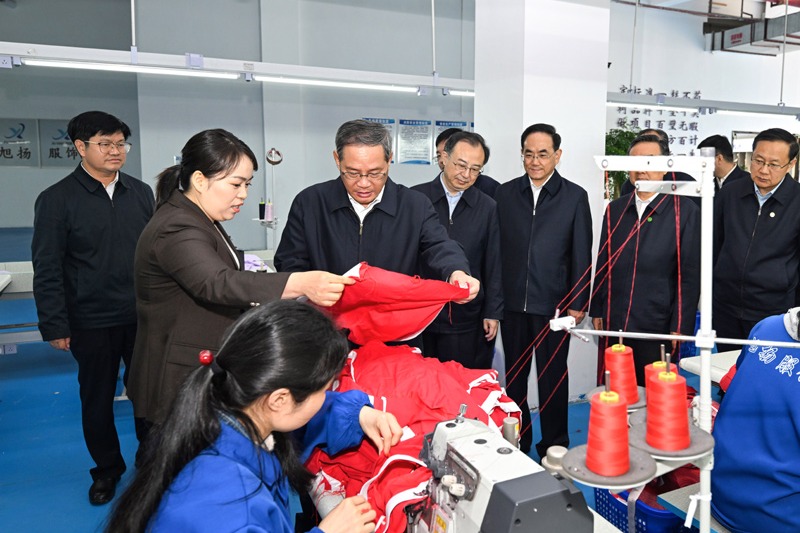Refiners eye new energy transition opportunities


Green goals to create incremental demand for clean power chemicals
While the country's goals of achieving carbon neutrality by 2060 will exert pressure on the country's refinery sector, energy transition efforts will also broaden opportunities for those who capture growing demand for petrochemicals and are willing to adjust and modify their production modes, analysts said.
China's pursuit of carbon neutrality will bring numerous opportunities to refiners willing and prepared to evolve, despite falling demand for oil products, said Li Shousheng, chairman of the China Petroleum and Chemical Industry Association.
The explosive growth of the new energy industry in China, for example, will create substantial incremental demand for chemicals used in photovoltaic facilities and wind power storage, while the resulting development will also lead to the growing demand for petrochemical products during the process of peaking carbon emissions and achieving carbon neutrality, Li said.
While the carbon peak and neutrality goals might push many refiners to the brink, it is believed several of those who succeed in seizing opportunities will thrive amid the challenges, he added.
Consultancy Wood Mackenzie estimated in its latest report that the energy transition will reduce demand for oil products but increase opportunities to capture growing demand for other petrochemicals.
Wood Mackenzie believes refinery utilization will see a significant contraction in profit margins as a result of the general decline in utilization, which could, in turn, lead to capacity closures that will affect the least efficient plants and those less able to adapt to new demand.
The global energy transition will soon result in a peak in the use of oil-based fuels followed by a decline. The transportation sector is at the forefront of this trend, with total worldwide demand expected to peak in the next one to two years and then begin a gradual slowdown, said the report.
While gasoline will experience the greatest impact because it is primarily used for light-duty passenger vehicles — and because the market for these vehicles is transitioning toward electric — demand for petrochemical feedstocks will continue to grow with rising global wealth, said the consultancy.
The remaining refining capacity must evolve to match a shift in product mix to meet petrochemical demand. Refiners need to find ways to make much less gasoline, marginally less diesel, and more jet fuel and petrochemical feedstocks, it said.
Li from the CPCIA believes that while refining — one of the world's most emissions-intensive industrial activities — faces major challenges from costly carbon exposure, the threat will also promote technological innovation and industrial upgrading in the sector.
Li said the key to survival lies in whether refiners can find the technologies, processes and products for carbon dioxide resource utilization.
"The world's chemical giants are all focusing on the technology of carbon dioxide resource utilization, and whoever leads in this technology will gain the advantage in future competition," he added.
As China is going full throttle on its green energy transition to peak carbon emissions by 2030 and achieve carbon neutrality by 2060, fossil fuels will see their proportion in the country's energy mix fall to less than 20 percent by 2060, a drastic decrease from the current 80 percent, which means the energy system will have to be rebuilt, according to the association.
However, the process of carbon neutrality means high-quality development under the constraint of carbon reduction and low carbon, rather than suspension of development, as social and economic development will still require growing demand for petrochemical products, said Li.
Luo Zuoxian, head of intelligence and research at the Sinopec Economics and Development Research Institute, agreed, saying petrochemical companies should further invest in green and low-carbon technological innovation to further facilitate industrial energy structure adjustment and industrial structure transformation.
Forward-looking refiners are already looking for opportunities to adjust or modify their production modes to capture growing demand for petrochemicals, including shifting to carbon capture, utilization and storage, as well as increasing their output of blue hydrogen.
Hengli Petrochemical, for example, is already demonstrating the potential of this strategy. Its recently commissioned petrochemical refinery can generate more than 40 percent petrochemical feedstock yields compared with about 10 percent yields for most refineries, said Wood Mackenzie.
China Petrochemical Corp, also known as Sinopec, the world's largest refiner by volume, said the company has been stepping up investment in low carbon and green development, with around 400 million yuan ($54.94 million) invested in related fields in 2022.
Taking advantage of its nationwide gas refueling network, the company has been actively building its hydrogen refueling network in China, and aims for a hydrogen refueling capacity of 120,000 metric tons per year by 2025, it said.
The company will also step up its refinery operations using green hydrogen, which is derived from renewable sources, to gain a lead in the high-quality development of the country's hydrogen sector, and promote the consumption of cleaner energy in the transportation and industrial sectors.
According to the International Energy Agency, refineries across the world are starting to apply hydrogen gas to lower the sulfur content of diesel fuel. Refinery demand for hydrogen has increased due to rising international demand for diesel fuel and as sulfur content regulations have become more stringent.
Zhao Dong, president of Sinopec, said the company will further boost its green hydrogen manufacturing capacity and expand its hydrogen refueling network nationwide to build itself into China's largest hydrogen company.
Sinopec launched the construction of a 3-billion-yuan green hydrogen plant, with an annual production capacity of 20,000 tons, in Kuqa, Xinjiang Uygur autonomous region, last year. It will also build hydrogen storage tanks and a hydrogen pipeline network.
The project is expected to begin production in 2023, and the hydrogen it produces will be supplied to Sinopec's Tahe refinery to replace its current gas-to-hydrogen facilities, it said.
According to Wood Mackenzie, the energy transition in China and its shift to a more circular value chain will provide refiners with new integration opportunities, including supplying renewable and bio-based feedstocks to petrochemical units.
Refiners worldwide must fundamentally rethink how refineries are designed and operated. Given how long it takes to make capital investments and build new plants, they should begin this review now, it said.




































